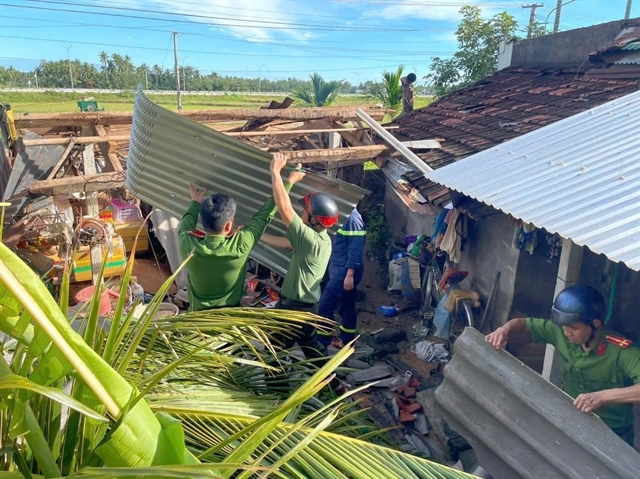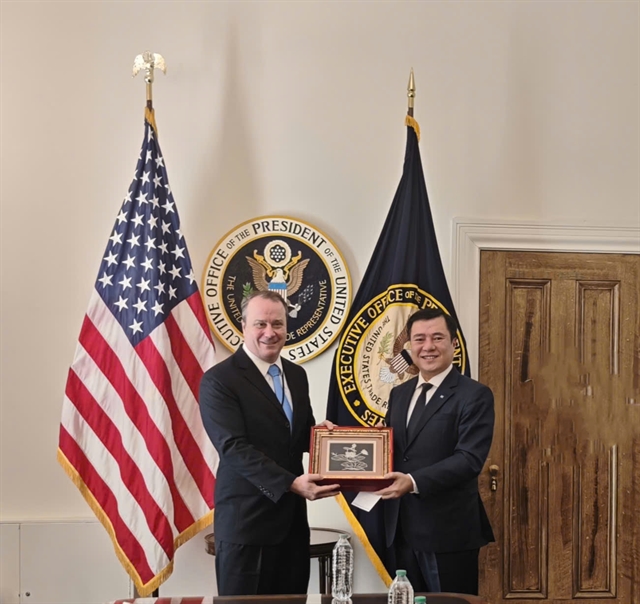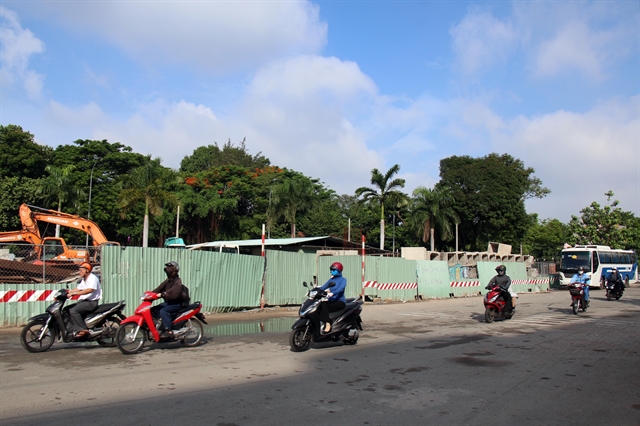 Society
Society

 |
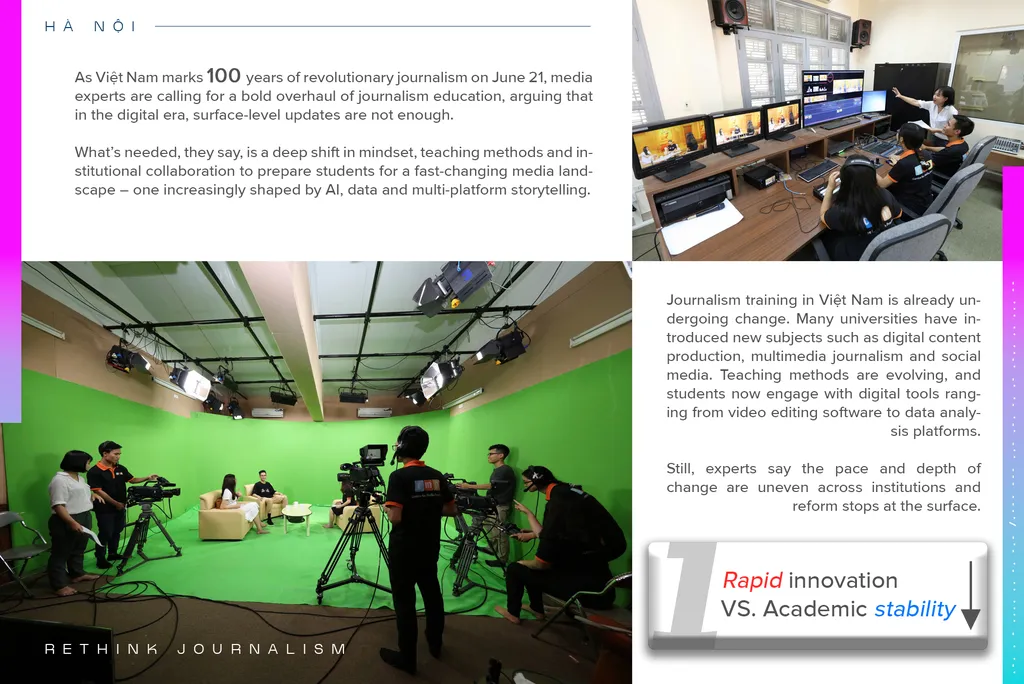 |
Đỗ Anh Đức, PhD, head of Digital Media at the School of Journalism and Communication under the University of Social Sciences and Humanities (affiliated to Vietnam National University Hanoi), told Việt Nam News that journalism schools were under immense pressure to constantly update their programmes to keep up with the rapid changes in technology and the media environment.
“Meanwhile, higher education demands a certain level of stability to ensure training quality, from programme frameworks and course structures to faculty development,” he said. “This tug-of-war between the need for rapid innovation and academic stability is a real challenge.”
"Digital transformation isn’t about adding a few tech-related courses or renaming old subjects. It requires a fundamental shift in how we think about journalism, how we teach it, and how we define the qualities of a journalist in this new era,” he said.
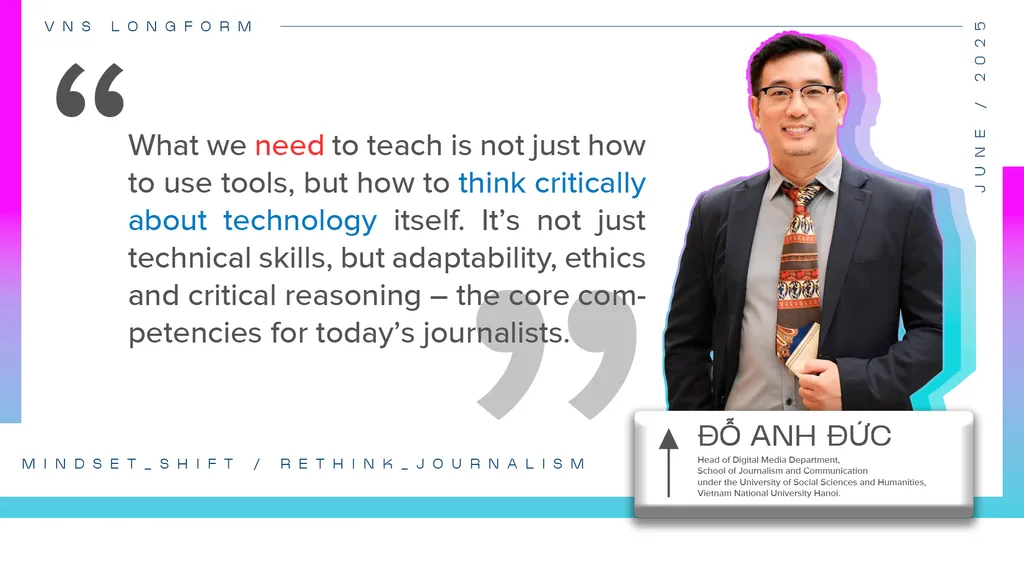 |
Nguyễn Thị Minh Hiền, dean of the Faculty of Public Relations and Advertising at the Academy of Journalism and Communication, shared a similar view.
"While students now gain experience with digital tools like video editing, livestreaming, design software and data analysis, some initiatives remain overly theoretical and disconnected from real-world practice. This is especially the case at non-specialised institutions," she said.
“Infrastructure also remains uneven. Many schools lack modern labs, studios, and facilities such as podcast production rooms, post-production equipment and digital newsrooms," Hiền said. “Integrating new technologies into teaching remains difficult due to limited funding, lack of equipment and the need for faculty retraining. This is not something every school can afford.”
She also pointed out that internships, a key part of practical learning, often fell short of their potential. As a result, many internships were formalities lacking real professional depth.
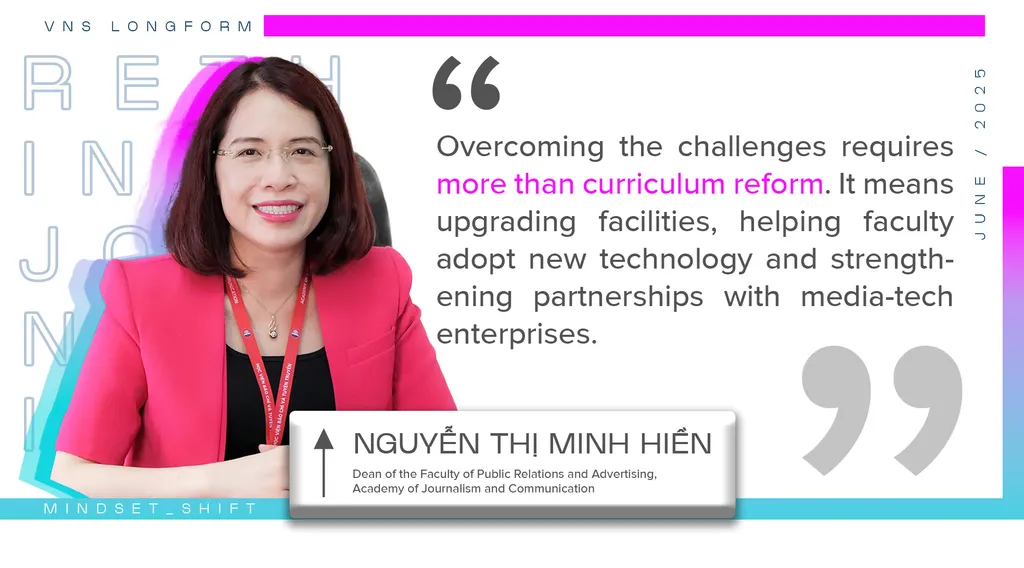 |
 |
Đức agreed, saying that practical training was still underdeveloped.
“While students today do have access to digital tools and multimedia platforms, these efforts are often fragmented, lacking a long-term strategy or comprehensive vision,” he said. “There’s a tendency to cover everything at once – video, podcasting, social media and AI – without clear priorities. That leads to confusion.”
He also pointed out that many students still lacked systematic thinking and true mastery of tools – knowing how to choose the right tools, for the right task, at the right time. Journalists, he said, must be able to adapt, reason ethically and navigate new platforms with both technical skill and editorial judgment.
Experts agree that the most enduring challenge lies in shifting the mindset of journalism educators from traditional models to digital, multi-platform thinking. This remains a major hurdle even for those with years of professional and teaching experience.
Hiền said that many instructors still followed traditional approaches, lacked familiarity with digital tools and hadn’t been systematically retrained. The generational gap between faculty and students further complicated things.
"This requires more than just curriculum upgrades. It means fostering a culture of learning among educators themselves," she said.
Ngô Bích Ngọc, head of Media and Communications at Swinburne Vietnam, added that digital transformation would only be an opportunity for those who adapt.
"Educators who embrace change will find technology empowering, but those stuck in old models will struggle," Ngoc said.
Đức echoed this, saying that many lecturers came from traditional academic backgrounds and were not fully immersed in the digital newsroom.
“Teaching tools that your students may already be more fluent in is not easy. That’s why training journalism educators must be a priority. It’s not just in technology but in digital pedagogy and industry alignment,” he added.
 |
 |
To improve the quality of journalism education in the digital age, experts advocate for the creation of digital innovation centres at universities. These centres could pilot new teaching models, support faculty retraining, and keep curricula aligned with real-world practices.
In particular, the focus must shift from simply delivering knowledge to developing thinking capacity, problem-solving abilities, and practical skills.
“Learning journalism today must go hand in hand with doing,” said Đức. “That means creating simulated work environments, engaging them in real-world projects and using case-based learning. Schools should expand collaboration with newsrooms to embed the profession in learning.”
Hiền supported that view and highlighted the value of partnerships with tech platforms like Meta, TikTok and Zalo. These companies offer not just technical training, but also help co-design course content and provide certifications, which ensures that graduates have industry-recognised credentials.
She also stressed the importance of project-based learning.
“Each course should produce real outputs that meet industry standards, from podcasts to TikTok channels and from news bulletins to digital campaigns,” Hiền explained.
“Bringing professionals into the classroom is also crucial. Guest lectures by journalists, tech specialists and content creators can also help bridge the gap between the classroom and newsroom.”
 |


